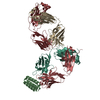+Search query
-Structure paper
| Title | Targeting protein-ligand neosurfaces with a generalizable deep learning tool. |
|---|---|
| Journal, issue, pages | Nature, Vol. 639, Issue 8054, Page 522-531, Year 2025 |
| Publish date | Jan 15, 2025 |
 Authors Authors | Anthony Marchand / Stephen Buckley / Arne Schneuing / Martin Pacesa / Maddalena Elia / Pablo Gainza / Evgenia Elizarova / Rebecca M Neeser / Pao-Wan Lee / Luc Reymond / Yangyang Miao / Leo Scheller / Sandrine Georgeon / Joseph Schmidt / Philippe Schwaller / Sebastian J Maerkl / Michael Bronstein / Bruno E Correia /     |
| PubMed Abstract | Molecular recognition events between proteins drive biological processes in living systems. However, higher levels of mechanistic regulation have emerged, in which protein-protein interactions are ...Molecular recognition events between proteins drive biological processes in living systems. However, higher levels of mechanistic regulation have emerged, in which protein-protein interactions are conditioned to small molecules. Despite recent advances, computational tools for the design of new chemically induced protein interactions have remained a challenging task for the field. Here we present a computational strategy for the design of proteins that target neosurfaces, that is, surfaces arising from protein-ligand complexes. To develop this strategy, we leveraged a geometric deep learning approach based on learned molecular surface representations and experimentally validated binders against three drug-bound protein complexes: Bcl2-venetoclax, DB3-progesterone and PDF1-actinonin. All binders demonstrated high affinities and accurate specificities, as assessed by mutational and structural characterization. Remarkably, surface fingerprints previously trained only on proteins could be applied to neosurfaces induced by interactions with small molecules, providing a powerful demonstration of generalizability that is uncommon in other deep learning approaches. We anticipate that such designed chemically induced protein interactions will have the potential to expand the sensing repertoire and the assembly of new synthetic pathways in engineered cells for innovative drug-controlled cell-based therapies. |
 External links External links |  Nature / Nature /  PubMed:39814890 / PubMed:39814890 /  PubMed Central PubMed Central |
| Methods | EM (single particle) / X-ray diffraction |
| Resolution | 1.88 - 3.3 Å |
| Structure data | EMDB-50522, PDB-9fkd:  PDB-8s1x: |
| Chemicals |  ChemComp-ZN:  ChemComp-BB2: 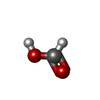 ChemComp-FMT: 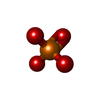 ChemComp-PO4:  ChemComp-K: 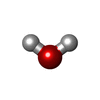 ChemComp-HOH: 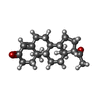 ChemComp-STR: |
| Source |
|
 Keywords Keywords | DE NOVO PROTEIN / Actinonin / de novo / computational / binder / CID / switch / deformylase / progesterone / Fab / anti-kappa |
 Movie
Movie Controller
Controller Structure viewers
Structure viewers About Yorodumi Papers
About Yorodumi Papers




